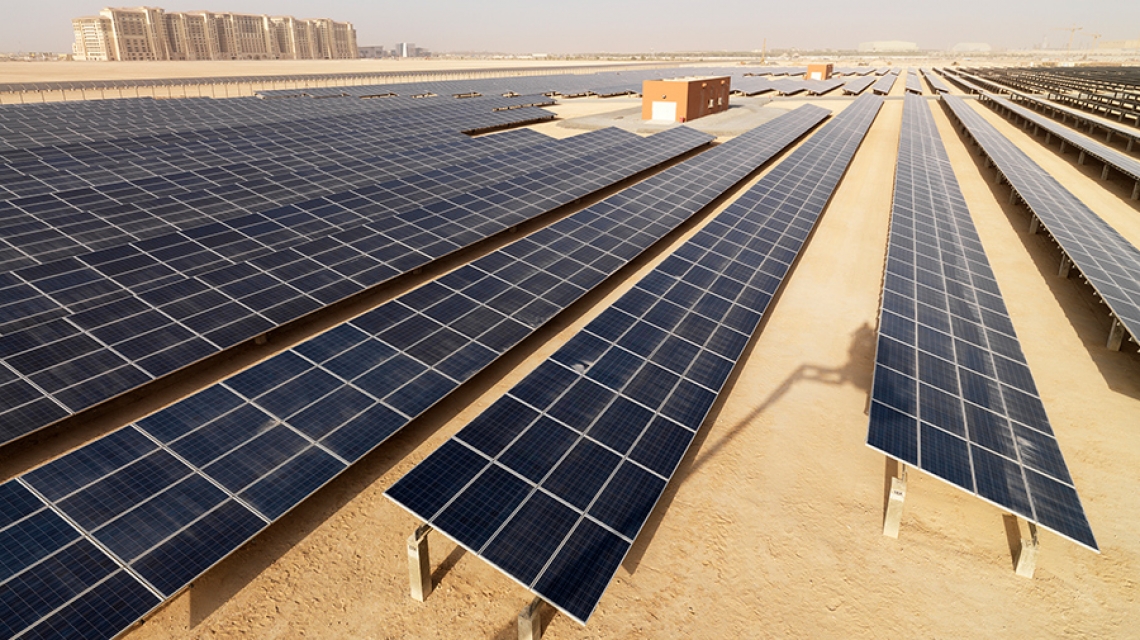
By Dr. Michael F. Rubner, Dr. Robert E. Cohen and Dr. Khalid Askar
Efforts to harness the sun’s energy for electricity generation have led to the development of high-efficiency silicon solar cells, capable of converting over 25% of the sun’s energy into usable electricity without any additional concentration.
While these technological advances provide a critical boost towards increasing solar power’s share in the world’s energy supply, in desert regions like that of the UAE, there is still a need for solar panels consisting of cells that not only have high efficiencies, but are also able to withstand and thrive under the country’s harsh, dusty climatic conditions.
Dust and dirt are the proverbial kryptonite to a solar panel’s ability to convert sunlight into electricity, drastically reducing a solar cell’s conversion efficiencies. Just four grams of dust per one square meter of a solar cell’s surface can reduce its energy output by 40%.
In order to maintain their intended efficiencies, solar panels are cleaned on a regular basis. Cleaning systems are often installed on large solar fields to rinse solar panel surfaces, washing away the dirt or grime that may have accumulated.
In the UAE, the combination of very dusty conditions and scarce freshwater resources underscore the critical need for innovative solutions that keep solar panels clean without the use of water. Such solutions will contribute to both the UAE’s water security and renewable energy goals.
In an effort to create high-efficient solar cells that require minimal cleaning and maintenance, we are part of a team of researchers from the Masdar Institute and the Massachusetts Institute of Technology (MIT) developing a low-cost “super coating” that, when sprayed onto a solar panel’s surface, enhances the solar cells’ key properties of self-cleaning, abrasion-resistance, self-healing, anti-reflection, and anti-static.
A solar cell with these five properties will be super-hydrophobic, which means that water won’t stick to the surface and will easily roll off, carrying dust and dirt with it more effectively; it will be scratch-resistant, protecting it from scratches caused by rocks or dust; in the event that the surface is scratched, it will repair itself automatically; it will absorb higher levels of energy by reducing the amount sunlight that reflects off the solar cell and back into the atmosphere; and it will repel negatively charged dust particles – which represent the majority of UAE’s dust – preventing the solar cell from getting overly dusty.
While scientists have been developing anti-reflection, anti-abrasion and self-cleaning coatings for solar cells for over a decade, they have been unable to optimize all three properties in one coating. This is because when one property, such as anti-reflection or self-cleaning, is achieved, then the other property of anti-abrasion will be reduced, or vice-versa. It has been a challenge to fabricate a coating that doesn’t require the sacrifice of one property over the others.
With our “super coating,” not only are we achieving optimal anti-reflection, anti-abrasion and self-cleaning properties together, we are also incorporating self-healing and anti-static properties, which has never been done before.
Integral to the coating is its low-cost and scalability, which are critical requirements for the technology’s eventual commercialization. For example, to achieve optimal self-healing properties in the coating, we are using affordable and abundant polymer and clay materials that cost roughly US$2 per kilogram.
Our spray coating technique can coat large, curved surfaces much faster and cheaper than conventional coating techniques that require expensive equipment.
Though we are still in the experimental phase of our research, we have already successfully optimized the properties of anti-reflection, self-cleaning and abrasion-resistance. We are now in the process of perfecting the self-healing and anti-static properties and expect to have all properties optimized within a year.
Through this dynamic collaboration, we have been able to leverage the state-of-the-art research facilities at both Masdar Institute and MIT, including Masdar Institute’s solar field, which will be used to test the coating during the field testing phase of our research.
Capitalizing on our individual strengths and skills within our respective disciplines, this truly multidisciplinary collaboration ensures that every aspect required to fabricate an optimized “super coating” is achieved.
Dr. Michael F. Rubner is the TDK Professor of Polymer Materials Science and Engineering at MIT; Dr. Robert E. Cohen is the St. Laurent Professor of Chemical Engineering at MIT; and Dr. Khalid Askar is Assistant Professor of Chemical and Environmental Engineering at the Masdar Institute of Science and Technology.
Printed in The National on 26 June 2016






